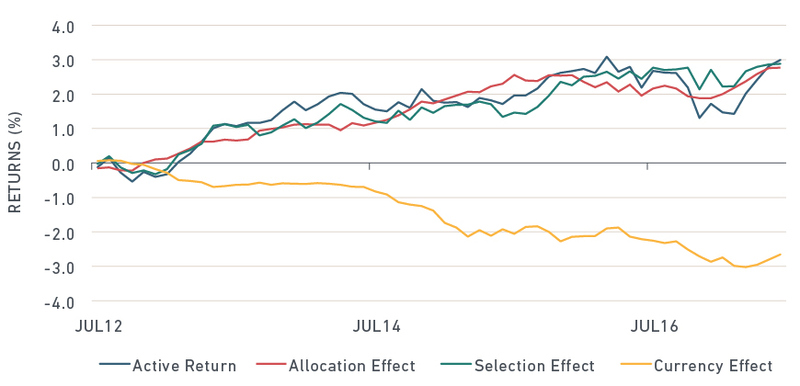Understanding ESG Investing
May 16, 2024 By Triston Martin
In the financial world, concern about sustainability is growing and leading to a new form of investing called ESG. This stands for Environmental, Social, and Governance (ESG) investing that includes non-financial elements in making investment choices. It evaluates how well a company does in areas like carbon emissions, working conditions, and variety within its board members. ESG investing tries to create long-term positive effects together with economic gains, matching the morals of investors with their portfolios.
Environmental Considerations

Nature-related elements evaluate how a company affects the planet. This includes things like using water, managing land, and conserving biodiversity. When companies put into action methods that are good for the environment or sustainable, they decrease their effect on nature while also helping to preserve ecosystems and natural resources. Investors who focus on ESG desire to support companies that take part in environmental care, stimulating fresh ideas within environmentally-friendly technologies as well as endorsing accountable utilization of resources.
Furthermore, progress in green technologies is a key factor that influences the way we think about environmental aspects in ESG investing. When it comes to renewable energy or farming methods that are good for the environment, new technology provides solutions on a large scale for handling environmental issues. Those who invest based on ESG pay close attention to firms using technology to decrease environmental dangers and improve the efficiency of operations. They understand the possibility of getting financial returns as well as having a positive effect on the environment.
- Lifecycle Analysis: Assessing the entire lifecycle of products or services, from raw material extraction to disposal, provides a comprehensive understanding of their environmental impact.
- Carbon Offsetting Initiatives: Companies investing in carbon offset projects, such as reforestation or renewable energy development, actively mitigate their carbon emissions, aligning with ESG goals.
Social Impact
ESG investing includes social criteria, which look at how companies deal with their workers and the wider community. These factors go beyond just labor practices to include product safety, supply chain ethics, and community involvement. Companies that show social responsibility place importance on treating employees fairly, sourcing ethically, and being engaged with the community. Investors using ESG principles evaluate how companies affect society by looking at things like employee turnover rates, customer happiness surveys, and programs for outreach into communities - all trying to match investments towards making good social results happen.
Additionally, the outbreak has emphasized the significance of social factors when making investment choices. Companies that have applied strong health and safety methods, shown support for their employees' welfare, and participated in helping with pandemic problems are getting more focus from ESG investors. The crisis has brought attention to the strength and flexibility of companies that show good social practices, thus confirming the importance of social impact within ESG investment plans.
- Supply Chain Transparency: Evaluating supply chain transparency helps identify risks related to labor exploitation, human rights abuses, and environmental violations.
- Diversity in Leadership: Companies with diverse leadership teams demonstrate a commitment to inclusivity and are better positioned to navigate complex challenges and capitalize on diverse perspectives.
Governance Factors
Governance elements in ESG investing are about checking the honesty and efficiency of a company's controlling and managing systems. Good corporate governance goes further than just following rules; it promotes openness, responsibility, and moral conduct. Investors who consider ESG pay close attention to how well governance is done in areas like board freedom, connecting executive pays with results, and standards for revealing information. They aim to reduce risks linked to governing matters while improving value for shareholders.
Moreover, the combination of technology and data analytics has changed how governance evaluation works in ESG investing. With digital instruments, investors can look into big quantities of data related to governance matters. This helps them find red signals or spots that need enhancement, leading to better choices when it comes to investing money. By using insights from data analysis, ESG investors can evaluate companies' management methods more effectively and participate in encouraging conscientious business behavior.
- Stakeholder Engagement: Proactive engagement with stakeholders, including shareholders, employees, and communities, fosters trust and strengthens relationships, enhancing corporate reputation and long-term sustainability.
- Ethical Supply Chain Management: Ensuring ethical practices throughout the supply chain mitigate risks associated with labor violations, environmental damage, and reputational harm, aligning with ESG principles.
Integration into Investment Strategies
ESG integration in investment strategies uses many methods that fit the sustainability targets and risk preferences of investors. Besides normal financial analysis, ESG matters also influence choices about where to invest money, forming the makeup of an investment portfolio and how risks are managed. Investors might choose screening tactics for not including companies with bad ESG results or directing their capital towards firms showing strong ESG qualifications, thus matching investments with goals and values related to sustainability.
Moreover, thematic investing is a deliberate method for incorporating ESG that concentrates on particular sustainability themes or megatrends. For instance, from efforts to counteract climate change to campaigns promoting social fairness, investors with a thematic focus direct capital towards firms that are making positive changes within selected ESG issues. This allows them to benefit from expansion possibilities while also pushing forward the objectives of sustainability. By selecting themes in which they invest, these investors can align their portfolios with wider societal trends and make a difference in areas of high significance.
- Risk Mitigation: Integrating ESG factors into investment strategies helps identify and mitigate risks associated with environmental, social, and governance issues, enhancing portfolio resilience and long-term performance.
- Impact Investing: Impact investing goes beyond ESG integration by explicitly seeking measurable positive social or environmental outcomes alongside financial returns, offering investors an opportunity to drive tangible change through their investment choices.
Measuring Impact and Performance

Measuring the impact and financial performance of ESG investments requires a multifaceted approach that combines qualitative and quantitative assessment methods. Investors utilize ESG ratings, indices, and impact metrics to evaluate companies' sustainability performance, comparing investment opportunities and identifying leaders and laggards within industries. Additionally, financial metrics such as return on investment (ROI), earnings per share (EPS), and cash flow analysis provide insights into the financial viability of ESG-integrated strategies.
Moreover, the evolution of reporting standards and frameworks has enhanced transparency and comparability in ESG performance measurement. Initiatives such as the Global Reporting Initiative (GRI) and the Sustainability Accounting Standards Board (SASB) provide standardized frameworks for companies to disclose ESG-related information, facilitating more robust assessment by investors. By aligning with globally recognized reporting standards, ESG investors can access consistent and reliable data to inform their investment decisions.
- Long-Term Value Creation: ESG integration emphasizes long-term value creation by considering sustainability factors that impact companies' resilience, competitiveness, and growth potential over time.
- Scenario Analysis: Scenario analysis allows investors to assess the potential impact of environmental and social risks on companies' financial performance under different future scenarios, enhancing risk management and strategic decision-making.
Conclusion
Investing in ESG is a change in how the finance world works, giving stress to sustainable methods and responsible behavior of corporations. People who do ESG investing blend environmental, social, and governance aspects into their choice of investments. They aim for good results both for society and the environment while also seeking financial benefits. As understanding of sustainability problems increases more and more, ESG investing is ready to have a large impact on shaping finance's future direction. It will push important changes towards creating a better-balanced world that can be handed down to coming generations.
-
 Know-how Dec 31, 2023
Know-how Dec 31, 2023Bureau of Labor Statistics Explained: Functions and Operations
The U.S. Bureau of Labor Statistics is the primary source for labor and employment data and statistics in the United States. Click to learn more.
-
 Banking Sep 13, 2024
Banking Sep 13, 2024EquityMultiple in 2024: Key Features and User Experiences
Discover how EquityMultiple is transforming real estate crowdfunding with user-friendly features, educational resources, and a supportive community for investors.
-
 Banking May 19, 2024
Banking May 19, 2024The Basics of Price Matching: A Beginner's Guide to Saving Money While Shopping
Discover what price matching is and how it can be your secret weapon for saving money. Give this article a quick read to learn how to take advantage of discounts and maximize your savings.
-
 Taxes Oct 17, 2024
Taxes Oct 17, 2024Navigating Lottery Taxes: Simplifying the Calculation Process
This article offers guidance on understanding and managing tax obligations after winning the lottery to optimize your financial benefits.
